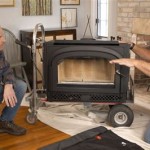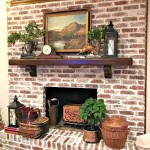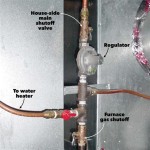Understanding the Gas Fireplace Valve: A Comprehensive Guide
The gas fireplace valve is a critical component of any gas fireplace system, responsible for regulating the flow of natural gas or propane to the burner. This control is essential for safe and efficient operation, allowing users to ignite, adjust, and extinguish the flame with ease. A malfunctioning gas valve can lead to serious safety hazards, including gas leaks and explosions. Therefore, understanding the function, types, potential issues, and maintenance of this vital component is paramount for all gas fireplace owners.
The primary function of the gas valve is to control the amount of gas supplied to the fireplace burner. This involves more than simply turning the gas on and off. The valve must also modulate the gas flow to create the desired flame height and heat output. Modern gas valves often incorporate safety features such as flame rectification, which detects the presence of a flame and automatically shuts off the gas supply if the flame is extinguished unexpectedly. This prevents the build-up of unburned gas within the firebox, mitigating the risk of an explosion. Furthermore, some valves offer remote control capabilities, allowing users to adjust the flame and temperature from a distance.
The operation of a gas valve involves a complex interplay of mechanical and, in some cases, electronic components. When the fireplace is activated, the valve opens, allowing gas to flow through a series of internal passageways. A regulator within the valve maintains a consistent gas pressure, ensuring stable flame performance. The gas then passes through an orifice, a small opening that precisely meters the amount of gas delivered to the burner. The size of the orifice, along with the gas pressure, determines the overall heat output of the fireplace. Electronic valves, often found in newer models, use solenoids to control the gas flow based on signals from a thermostat or remote control. These valves offer greater precision and flexibility in flame adjustment.
Key Points about Gas Fireplace Valves:
Types of Gas Fireplace Valves
Gas fireplace valves can be categorized into several types based on their operating mechanisms and control methods. Understanding these different types is crucial for troubleshooting issues and selecting the appropriate replacement valve if necessary.
Millivolt Valves: These are among the most common types of gas valves used in fireplaces. They operate on a small electrical current generated by a thermopile, a device that produces electricity when heated by the pilot light flame. The millivolt current powers the valve solenoid, allowing gas to flow to the main burner. Millivolt systems are relatively simple and reliable, requiring no external power source. However, they typically offer limited control options and are less precise than electronic valves.
Electronic Valves: These valves rely on an external power source, such as a standard electrical outlet or battery, to operate. They use electronic controls and sensors to regulate the gas flow based on signals from a thermostat or remote control. Electronic valves offer greater precision and flexibility in flame adjustment, allowing for features such as programmable timers and temperature settings. They also often incorporate advanced safety features, such as automatic shut-off in the event of a power outage.
Standing Pilot Valves: These valves maintain a continuously burning pilot light, which is used to ignite the main burner. They are relatively simple and reliable but can consume a significant amount of gas over time, even when the fireplace is not in use. Standing pilot valves are often found in older fireplace models.
Intermittent Pilot Ignition (IPI) Valves: These valves use an electronic igniter, such as a spark igniter or hot surface igniter, to light the pilot light only when the fireplace is turned on. This eliminates the need for a continuously burning pilot light, saving energy and reducing gas consumption. IPI valves are more complex than standing pilot valves but offer improved efficiency and convenience.
Direct Spark Ignition (DSI) Valves: These valves directly ignite the main burner without the need for a pilot light. They use a high-voltage spark to ignite the gas stream, providing instant ignition and eliminating the need for a pilot light altogether. DSI valves are highly efficient and offer simplified operation.
Common Problems with Gas Fireplace Valves
Like any mechanical device, gas fireplace valves are susceptible to wear and tear over time, leading to various operational issues. Identifying these problems early can help prevent more serious damage and ensure the safe operation of the fireplace. Understanding the potential causes of these issues is crucial for effective troubleshooting.
Pilot Light Problems: A common issue is difficulty in lighting or maintaining the pilot light. This can be caused by a dirty pilot light assembly, a malfunctioning thermocouple or thermopile (in millivolt systems), or a clogged gas line. A weak pilot flame may not generate enough heat to keep the gas valve open, resulting in the pilot light going out shortly after ignition.
Valve Failure to Open: If the main burner fails to ignite when the fireplace is turned on, the gas valve may be failing to open. This can be caused by a faulty solenoid, a damaged gas valve diaphragm, or a lack of electrical power to the valve (in electronic systems). In millivolt systems, a weak thermopile may not generate enough current to activate the valve.
Gas Leaks: Gas leaks are a serious safety hazard and can occur around the gas valve connections or within the valve itself. A gas leak can be detected by a distinct odor of natural gas or propane. If a gas leak is suspected, the gas supply should be immediately shut off, and a qualified technician should be contacted to inspect and repair the system.
Erratic Flame Behavior: An inconsistent or flickering flame can indicate a problem with the gas valve. This can be caused by a fluctuating gas pressure, a partially clogged orifice, or a malfunctioning regulator within the valve. Electronic valves may exhibit erratic behavior due to faulty sensors or control circuits.
Valve Noise: Unusual noises emanating from the gas valve, such as hissing, clicking, or buzzing sounds, can indicate a problem with the internal components. These noises may be caused by a worn-out diaphragm, a loose connection, or a malfunctioning solenoid. Addressing these noises promptly can prevent further damage and potential safety hazards.
Maintenance and Safety Considerations
Regular maintenance is essential for ensuring the safe and efficient operation of a gas fireplace and prolonging the lifespan of the gas valve. This includes routine inspections, cleaning, and occasional component replacement. Neglecting maintenance can lead to performance issues, safety hazards, and costly repairs.
Regular Inspections: The fireplace should be inspected at least annually by a qualified technician. This inspection should include a thorough examination of the gas valve, gas lines, burner assembly, and venting system. The technician should check for gas leaks, corrosion, and any signs of damage or wear.
Cleaning: The fireplace and gas valve should be cleaned regularly to remove dust, debris, and soot. A soft brush or vacuum cleaner can be used to clean the exterior of the valve. The pilot light assembly should be cleaned periodically to ensure proper ignition and flame stability. Care should be taken not to damage any sensitive components during cleaning.
Gas Leak Testing: Gas leak testing should be performed regularly, especially after any maintenance or repairs are performed on the gas system. A soap and water solution can be applied to the gas valve connections and gas lines. If bubbles appear, this indicates a gas leak. A gas leak detector can also be used to detect even small leaks.
Component Replacement: Certain components of the gas valve, such as the thermocouple, thermopile, or solenoid, may need to be replaced periodically due to wear and tear. These components should be replaced with genuine replacement parts to ensure compatibility and proper function. It is crucial to consult with the fireplace manufacturer's specifications and local building codes when selecting replacement components.
Safety Precautions: When working on a gas fireplace, it is essential to follow all safety precautions. The gas supply should be shut off before performing any maintenance or repairs. Electrical power to the fireplace should also be disconnected. A qualified technician should always be consulted for complex repairs or if there are any concerns about the safety of the gas system. Carbon monoxide detectors should be installed in the home to provide early warning of any carbon monoxide leaks.
In conclusion, the gas fireplace valve is a critical component that requires careful attention. Understanding its function, types, potential problems, and maintenance requirements is essential for ensuring safe and efficient operation. Regular inspections, cleaning, and timely repairs can prolong the life of the valve and prevent costly and potentially dangerous issues.

Dante Cp Bvs2 Br B 3 4 Inch Quarter Turn Straight Gas Ball Valve Kit Brass

Universal Gas Valve Keys Fireplace Key Replacement

Your Guide To Gas Log Valves Controls Woodlanddirect Com

Sit 820 Series Millivolt Fireplace Valve 225 Degree 30 Turndown Natur Fire Parts Com

Replacing A Gas Ball Valve To Your Fireplace

How To Test Your Main Control Valve Www Mygasfireplacerepair Com

Control Valves Fire Parts Com

Pro Flex Hearth Master Valve Kit Straight Brushed Nickel Finish Key And In The Gas Fireplace Log Accessories Department At Com

Montigo Gas Valve Ng Rgc1006

Gas Valve Kit Guide Fireplaces Direct Learning Center
Related Posts








